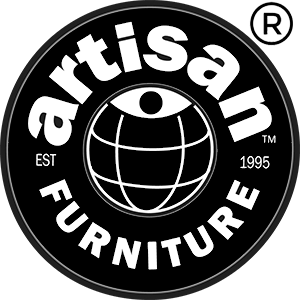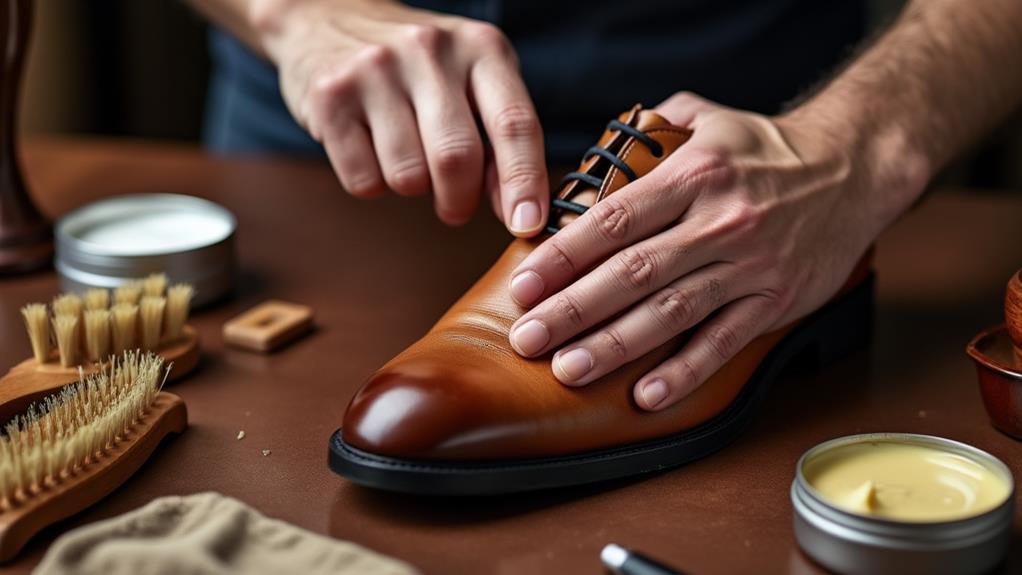To master the art of leather care, begin by understanding the nuances of different leather types, such as full-grain and top-grain, each with distinct characteristics. Cleaning involves using a damp, lint-free cloth, possibly with mild soap for stubborn stains, ensuring you air dry the leather afterward to avoid damage. Regular vacuuming with a soft brush attachment prevents dust buildup, particularly in seams and crevices. Conditioning every 6-12 months maintains the leather's suppleness, while buffers enhance its shine. Protect your leather from direct sunlight and heat sources to prevent fading and cracking, allowing you to elevate your leather care knowledge further.
Table of Contents
ToggleUnderstanding Leather Materials
When you're diving into leather care, understanding the materials is key.
Leather comes in various types, each requiring specific care to maintain its beauty. Full-grain leather, known for its durability and natural look, demands minimal processing. It's less prone to wear but needs regular conditioning.
Top-grain leather, slightly sanded to remove imperfections, offers a smoother finish but requires consistent care to prevent scratches.
Split leather, often used in suede, is more susceptible to damage and needs gentle handling.
Bonded leather, made from leather scraps, is less durable, often requiring careful maintenance to avoid peeling.
Knowing these differences helps you choose the right care methods, ensuring your furniture remains a stunning centerpiece in your home for years.
Effective Cleaning Techniques
With a few straightforward steps, you can keep your leather furniture looking pristine and elegant.
Begin by wiping the leather surface with a clean, lint-free cloth dampened with water, employing smooth, circular motions to lift dirt without causing damage. For stubborn stains, a mild soap solution might be necessary; always test it on an inconspicuous area first.
Once cleaned, allow the leather to air dry completely. To tackle tougher stains, apply a suitable leather cleaner, choosing one appropriate for your leather type.
Work in small sections, using circular motions, and let it sit to break down stains. Finish by gently wiping off excess cleaner with a dry cloth, ensuring the leather is free of residue before conditioning.
Vacuuming Your Leather Furniture
To keep your leather furniture looking its best, start by vacuuming to remove loose dirt, dust, and debris.
Use a vacuum cleaner with a soft brush attachment to prevent scratching or damaging the leather surface. Confirm moderate suction power, as excessive force might harm the material.
Begin from the top and work your way down, systematically covering every area. Pay particular attention to seams and crevices, where debris tends to accumulate.
Dirt trapped in these areas can cause abrasion and lead to premature wear. Regular vacuuming not only maintains cleanliness but also prepares the surface for further care steps.
Wiping and Stain Removal
After vacuuming, grab a clean, lint-free cloth and dampen it with water to wipe down your leather furniture.
Use smooth, circular motions to lift dirt effectively, ensuring you don't damage the leather surface. For stubborn stains, prepare a mild soap solution, but always test it on a hidden area first to avoid discoloration.
Apply the solution gently, focusing on the stained spot, and wipe away the residue carefully. Remember, leather should air dry completely after wiping to prevent moisture damage.
If any residue persists, a slightly damp cloth can help, but avoid soaking the material. Consistent attention to detail during this process helps maintain the leather's integrity and appearance, ensuring it remains a stylish addition to your home.
Conditioning Your Leather
Conditioning your leather is essential to preserving its suppleness and beauty. Regular conditioning maintains leather's natural oils, preventing it from drying and cracking.
Choose a conditioner suitable for your leather type, guaranteeing it's free of harsh chemicals. Pour a small amount onto a clean cloth, not directly onto the leather, to avoid oversaturation. Test it on an inconspicuous area to check for adverse reactions.
Apply in circular motions, allowing the conditioner to absorb properly into the material. This method guarantees even distribution and maximum absorption, enhancing the leather's durability.
After conditioning, use a soft cloth to buff the surface lightly. Buffing enhances shine and revitalizes the leather's appearance, leaving it smooth and well-maintained.
Protecting Against Sunlight
When it comes to protecting your leather furniture, sunlight is one of its biggest foes. Direct exposure to UV rays causes fading and discoloration, drying out the leather and leading to cracks.
To prevent this, position your furniture away from windows or use blinds and curtains to block sunlight. Additionally, UV-protective window film can reduce exposure.
It's vital to avoid placing leather near heat sources, like radiators, as they exacerbate drying. Maintaining a stable indoor climate with controlled temperature and humidity aids in preserving leather's suppleness.
Regularly rotating furniture pieces guarantees even wear, minimizing prolonged exposure in one area.
Essential Maintenance Tips
To keep your leather furniture looking its best, integrate regular maintenance into your routine.
Start by vacuuming weekly with a soft brush attachment, ensuring dust and debris don't accumulate and damage the leather.
Follow up with a clean, lint-free cloth dampened with water, wiping in smooth, circular motions to remove any remaining dirt.
Conditioning every 6-12 months is essential for maintaining the leather's integrity.
Use a conditioner suited to your leather type, applying it in circular motions for even distribution.
After conditioning, buff the surface with a soft cloth to enhance shine and moisture retention.
Avoid harsh chemicals and direct sunlight, as they can degrade the leather.


